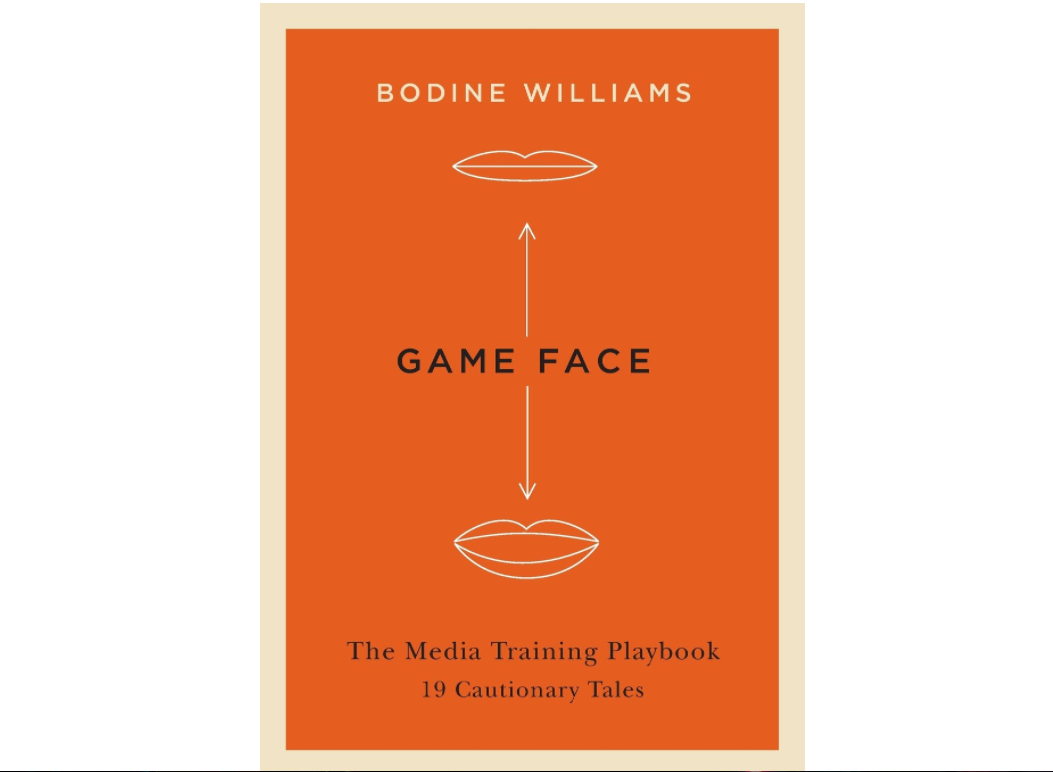Journalism, public relations and the author in between
By Erin Leite
Game Face: The Media Training Playbook – 19 Cautionary Tales, a self-published book by Toronto public relations consultant and former journalist Bodine Williams, brings two seemingly similar but often clashing professions together. It lays out the dos and don’ts of interviewing for the people answering the questions, and has a lot to say for the people asking them.
As a specialist in crisis management, Williams knows exactly how to avoid an interview’s worst possible consequences. “I really want to, in my book, kind of show in the real world, historically, that human nature is still human nature,” she said in an interview. “People make the same fundamental mistakes. And mostly, they come down to insecurities and confidence.”
In her book, Williams uses real-life examples — including those of Oscar Wilde, James Frey, Mel Gibson and 16 more — to display the subject’s mistakes and help future interviewees learn from them.
As a media trainer at Burson-Marsteller in New York, Williams provided clients with informative handouts until she felt that that was no longer substantial. What her clients needed, she said, was something they could repeatedly refer to — something that outlined exactly what her training was all about — so she wrote Game Face.
However, there are always two sides to a story. In this case, it’s the impending downfall Williams sees in her former profession, journalism. She says there is less investigative reporting, fewer newspapers and fewer dedicated reporters.
“Part of that is the reality of the lack of resources on the journalism side,” she says, “but part of it’s a failure of the journalism side to resist gratuitous coverage of celebrities and nonsense, and to try to find the resources to honour and to basically support real reporting.”
A 2014 article from the Poynter Institute that caught Williams’s attention became another force behind her book. Bob Steele, in his article “Interviewing: The Ignored Skill,” claims that most journalists lack proper training in interviewing – a serious problem for the industry.
“If we aren’t proficient at asking the right questions at the right time, we’ll miss on accuracy, fall short on context, and stumble on fairness,” he writes. “It’s essential to consider the role that interviewing skills – or lack thereof – plays in how we measure up.”
Williams strongly agrees, explaining that a journalist’s fault in interviewing is a PR specialist’s time to shine. Selling products and stories is the proactive side of public relations, she says. The other half is defensive – protecting clients against bad journalism.
“When I look at interviews now, half of them are just so tepid,” she says . “I don’t know if the reporter hasn’t kind of immersed themselves in their topic, I don’t know if they’re sort of anxious to get the interview, (or) to play nice with the subject.”
Williams is not interested in putting journalists down for less-than-adequate work, though. She’s hopeful that her book serves as inspiration for journalists and journalism schools to take an in-depth look at the importance of the interview. As Williams says, it is “the most effective of the investigative tools.”
“When you think of the story when you’re assigned it as the journalist, as the frame, the interview is really the décor,” she says. “And that’s where it gets you the colour. It sometimes gives you those blunders, those gaps, but it can really take the story right to another level.”
Erin Leite is a student in Humber College’s Bachelor of Journalism program.
Erin Leite is a student in Humber College's Bachelor of Journalism program.

